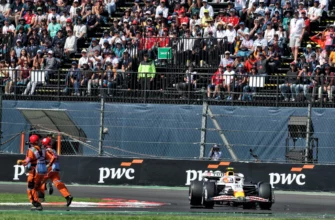Formula 1, a sport perpetually balancing tradition with innovation, continues to refine its Sprint weekend format. For the 2025 season, the calendar features six such events, promising intensified action and a compressed challenge for teams and drivers alike. This isn`t just about more racing; it`s about a fundamental shift in how a Grand Prix weekend unfolds, demanding precision, adaptability, and perhaps a dash of calculated recklessness.
The Sprint`s Enduring Enigma: Why We Have Shorter Races
The introduction of the Sprint format was, fundamentally, an attempt to inject more excitement into every day of a Grand Prix weekend. Gone are the days when Friday practice sessions might lull some viewers into an afternoon nap. Now, Friday sets the grid for a Saturday dash, which in turn influences the main event on Sunday. It`s a strategic chess match condensed, often leading to unpredictable outcomes and a palpable sense of urgency from the moment the cars hit the track.
While the Sprint has had its vocal proponents and equally passionate critics, its presence on the F1 calendar seems firmly entrenched for 2025. It’s a bold experiment in a sport often resistant to change, and the ongoing adjustments reflect Formula 1’s pursuit of a format that satisfies both purists and those new to the spectacle.
The Chosen Six: Venues Ready for the Condensed Chaos
For 2025, Formula 1 has meticulously selected six circuits to host these accelerated race weekends. Each venue brings its unique character to the Sprint challenge, promising diverse conditions and strategic complexities. Let’s take a closer look at where the condensed drama will unfold:
- Chinese Grand Prix, Shanghai: Kicking off the Sprint season, Shanghai’s sprawling track, known for its challenging Turns 1-4 complex and long back straight, will demand a precise setup from the outset. Its unpredictable nature often leads to intriguing Sprint battles.
- Miami Grand Prix, Miami: A relatively new addition to the F1 calendar, Miami`s street circuit brings glitz, glamour, and often, tight racing. The Sprint here will test drivers` ability to navigate concrete walls at high speed without costly errors.
- Belgian Grand Prix, Spa-Francorchamps: A legendary circuit, Spa makes a welcome return to the Sprint calendar, replacing Austria. Its iconic Eau Rouge-Raidillon complex and vast, sweeping sections are a crucible for any racing car. The notorious microclimates around the Ardennes forest could add an extra layer of strategic intrigue to the Sprint.
- United States Grand Prix, Austin: The Circuit of the Americas, with its undulating profile and varied corner sequences, is a driver`s favorite. Austin`s Sprint is usually a high-speed, intense affair, offering plenty of overtaking opportunities, particularly into Turn 1.
- Sao Paulo Grand Prix, Sao Paulo: Interlagos is a classic Sprint venue, consistently delivering spectacular races. Its short lap, elevation changes, and often volatile weather conditions make it a true test, where grid positions earned in Sprint Qualifying can be quickly overturned.
- Qatar Grand Prix, Lusail: The floodlit Lusail International Circuit presents a desert challenge. Its long main straight and high-speed corners will put aerodynamics to the test, and night racing conditions add another variable to the Sprint equation.
The decision to feature Spa-Francorchamps in place of Austria marks an interesting shift, indicating F1`s willingness to rotate these high-demand events among its premier venues. One can almost hear the sighs of relief from the strategists, now with a new puzzle to solve.
The Strategic Tightrope: Mastering the Sprint Weekend
For teams and drivers, a Sprint weekend is less a leisurely stroll and more a frantic dash. With only one practice session before the competitive action begins, the margin for error is razor-thin. Car setup, usually a meticulously refined process over several sessions, must be nailed almost instantly. This compression of critical activities places immense pressure on engineers and drivers to find the optimal balance between performance and reliability under severe time constraints.
The Sprint Race itself, typically around 100km, demands a different approach than the main Grand Prix. Tire degradation and fuel management become less critical, replaced by an all-out sprint for position. This often leads to more aggressive driving and thrilling overtakes, as drivers know every position gained could be crucial for Sunday`s starting grid, let alone the championship points on offer.
Points Make Prizes: The Championship Impact
While often seen as a precursor to the main event, the points awarded for Sprint races are far from negligible. The top eight finishers score points, from 8 for the winner down to 1 for eighth place. In a championship where every single point can differentiate a victor from a runner-up, these Sprint points can accumulate to a significant tally. They can shift momentum, influence championship standings, and add another layer of strategic depth to the overall season narrative.
Consider the cumulative effect over six weekends: 48 potential points for a driver who wins every Sprint. That’s nearly two Grand Prix victories worth of points available in these shorter formats, underscoring their importance in the grand scheme of the championship.
The Evolving Spectacle: What Lies Ahead for F1 Sprints?
As Formula 1 progresses, the Sprint format will undoubtedly continue to evolve. Feedback from teams, drivers, and crucially, the fans, will shape its future. The aim is to create a more engaging, unpredictable, and ultimately, more thrilling experience without diluting the prestige of the traditional Grand Prix. Whether it achieves this delicate balance perfectly remains a subject of debate, but for 2025, the six Sprint weekends are poised to deliver a concentrated dose of Formula 1 exhilaration. Get ready for the rush.







